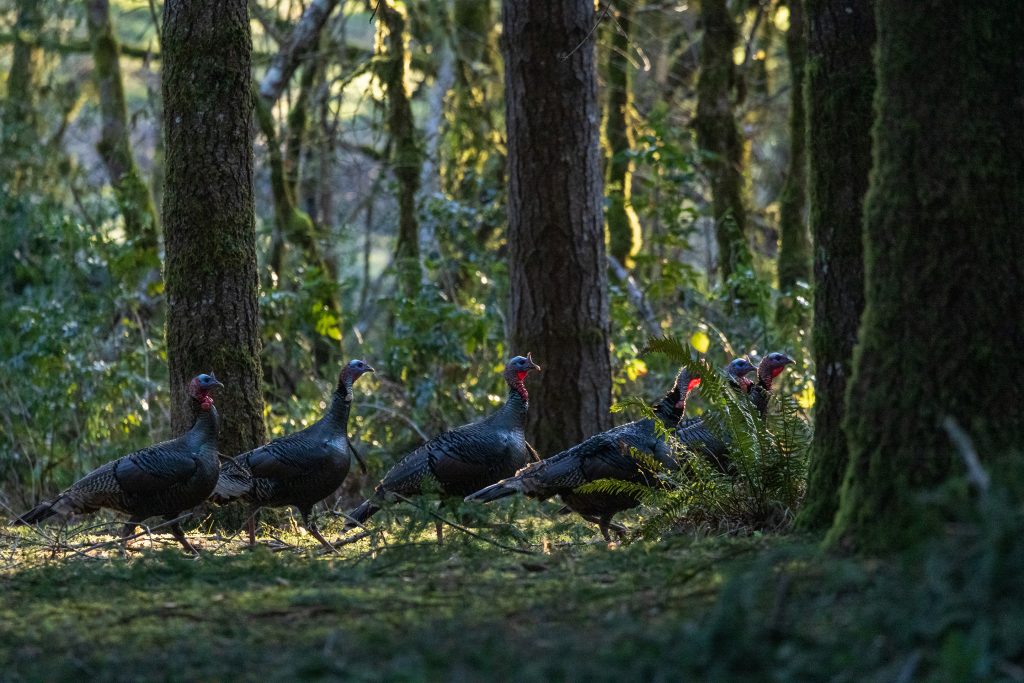One Spot for Spring Turkey Season
For the second time in three days, a new tom popped up on the trail camera. It was three-fourths of a mile from the first sighting. In less than an hour I was in position, calling. The tom came in silent and never strutted.
At 23 yards, the shot found its mark in the final week of the spring season, and I’d just filled my third and last tag on the same ridge. I’m often asked, “How many turkeys can I take from one spot in a season?” The answer comes down to turkey numbers in the area. Because turkey populations can fluctuate from year to year, even during the season, there’s no concise answer. The truth, however, can be discovered through scouting.
I run trail cameras year-round for turkeys. Not only do I monitor tom numbers, but also hen populations, poult recruitment and fall flock dynamics. A lot of birds show up in the fall, and often stay there all winter and sometimes into spring.

Three years ago during both the spring and fall seasons, buddies and I took nine toms from one timbered ridge. Last year I shot two from the same spot because numbers were down. Turkeys needed a chance to rebound.
If you only have one spot to hunt turkeys this spring, and multiple tags to fill, start scouting. Before the season you want to know how many turkeys are in the area. By studying trail camera video clips and spotting scope photos taken while scouting, you’ll be able to identify individual birds, thus get an accurate count.
One spot close to home I scout three times a week. I also have nine Moultrie Mobile trail cameras set on the half-mile wide, 1-mile-long ridge. By the season opener, I know how many toms are there, the number of hens present, where they’re roosting and what their routines look like. I know which toms are traveling and which ones stick to a strutting ground. If you can tag one of these birds on opening day, you’re off to a good start.

As hens go to nest, toms cover ground in search of other hens to breed. New toms often show up throughout the season. Sometimes they stick around, sometimes they get run off by a boss tom. If a new tom appears, get on it fast. Using a hen decoy and excited calling will often bring in a new tom. Being ready to hunt when a new tom shows up is key to punching a tag.
Often, bachelor flocks of 2-year-old toms appear once the season is underway. They’re like that middle school group of bullies who walk around, chests puffed up, fearing no one, chasing girls who want nothing to do with them. These young toms can be quick to respond to calls and will pummel decoys. Since they move as a flock, it’s a good idea to have a buddy along.
As the season progresses, increasing the number of trail cameras will reveal valuable insight. Spread them out in order to better understand tom movement. By late May many toms are in summer feeding mode, nibbling on grass seeds and insects. Their routines become predictable. Sometimes new toms fill in where local toms vacated, and sometimes new toms join with birds you’ve been watching for months.
I like having two to three adult toms in one hunting area. This ensures breeding will take place, spring through summer. It will also serve as a buffer should predators or storms claim a tom.
Poult survival and the building of beardless flocks in winter will have a direct correlation to the number of toms in an area, come spring. The more hens, the more toms will show up, usually. Closely watch hens before the season and in the early weeks, before they start tending nests, and you’ll get a solid indication of how many toms are around.

Last spring, a young man I’ve been mentoring figured there were enough toms on his chunk of property for me to shoot one, too. An hour into our morning hunt, nine toms were in front of us and several more gobbled in the river bottom. Taking multiple from that spot would not upset the balance.
By closely monitoring turkey populations in your area, and learning how they use a specific piece of land, you’ll know how many toms are around, thus, how many can be shot from season to season. Not only will such knowledge make you a better turkey hunter, but it’ll also provide valued insight to better understand and manage turkeys.
Note: For signed copies of Scott Haugen’s popular book, Western Turkey Hunting: Strategies For All Levels, visit www.scotthaugen.com.
